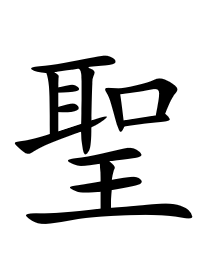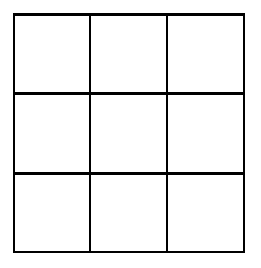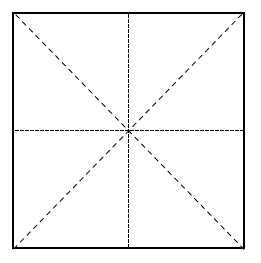Yi-Tao Bagua History: First Stage - Creation
Fu Xi's Bagua - a blend of ancient observation and ingenuity. Still relevant today, it's your gateway to understanding the universe. Explore Yi-Tao Bagua now.

Yi-Tao Bagua, a profound cosmology hailing from ancient China, offers an intriguing universe model marrying ancient wisdom and modern science. This blog post takes a deep dive into its compelling history, from its inception to present-day relevance.
From Observation to Cosmology: The Birth of Yi-Tao Bagua
In the early days of the Yi-Tao Bagua, its creator Fu Xi and his contemporaries were deeply engrossed in its development. Fu Xi's community was keenly observant of their surroundings, meticulously studying both heavenly and earthly phenomena. They looked into every facet of their environment, from the wildlife and vegetation to the elements that sustained life. This exploration led them to form a basic law encapsulating their observations - the Yi-Tao Bagua, akin to our modern understanding of "cosmology".
In the second portion of "Yi Jing Xi Ci Zhuang", Confucius provides an insightful glimpse into our past. He portrays a time—the era of Fu Xi—where mankind was engaged in a profound relationship with the world, scrutinizing every minute detail with curiosity and reverence:
Long ago, in the era of Fu Xi, people observed everything around them very closely. They looked to the skies and noticed its varied phenomena. They watched the earth and observed the diverse happenings there. They studied animals, plants, and the environment that all life relies on. They scrutinized and compared everything, whether near or far, familiar or foreign. From these observations, they formulated a fundamental law and created the Bagua. This allowed them to communicate with the spiritual essence of the universe, which is the basic law guiding its movement and changes. It also helped them categorize the various conditions and states of all things."

The Essence of Yi-Tao Bagua: An Ancient Cosmological Model
The so-called "Yi-Tao Bagua" could be likened to today's "cosmology." Its basic theory is the Yi-Tao, where "Yi" refers to its name, "Tao" encapsulates its content, and "Bagua" represents its mathematical expression, a universe model marrying form and numbers. The inception of Yi-Tao Bagua originated from Pan Gu, an exploration to continually understand cause-and-effect relationships, much like the age-old chicken-or-egg conundrum. This logical method involves a journey back in time to the origins of the universe. Ancient Chinese referred to this method as "Mente."
The creation process involved "Jie Sheng", or knotting ropes, a method so effective that the philosopher Lao Zi longed for a return to this era. The outcome, known as the "Heavenly Net", represented the universe model we now recognize as the Yi-Tao Bagua. Due to the use of primitive materials, this model required constant repair, giving rise to the legend of Nü Wa (women of Fu Xi's time) who repaired the "Sky" with colored stones.

Modern Parallels: Ancient Wisdom Meets Modern Science
These ancient concepts - the "Heavenly Net", and the colored stones - draw striking parallels with modern scientific theories. For example, the "Heavenly Net" echoes our concept of the "fabric of space-time", while the colored stones mirror the "color charge" in quantum chromodynamics.
The Yi-Tao Bagua, created by Fu Xi, was referred to as the "Xian Tian study" by scholars of the Song Dynasty. This signifies it as the foundation and basis of the Yi-Tao Bagua. The Xian Tian study primarily involves pure theoretical exploration of human knowledge, closely paralleling the study of basic science in modern times.
The Yi-Tao Bagua of Fu Xi eventually laid the foundation for the Xian Tian studies. Although the universe model created with rope knots may have disappeared with time, its principles were predominantly propagated by the "sages". The term Sheng, which translates to sage, is believed to represent the transmission of the Yi-Tao Bagua.

The Chinese character for "sage" (聖, sheng) comprises two components. The bottom part 壬 symbolizes the "inheritance and transmission of the Yi-Tao Bagua", and the upper part represents the method of inheritance and transmission, which is, listening (耳, er) and speaking (口, kou).
This age-old method of knowledge transmission, steeped in rich tradition and symbolic storytelling, finds its modern counterpart in the time-honored practices of scientific academia. It's fascinating to observe how the ancients passed down intricate cosmological concepts using an oral tradition, a practice that continues to be a cornerstone in modern scientific communities. From the halls of academia to the cutting-edge research laboratories, we find the legacy of this ancient method in the mentor-apprentice relationships, the sharing of ideas during seminars and conferences, and the collaborative process inherent in scientific research.

The Dragon Concept: Ancient Metaphor for Numerical Axis
The universe model is also thought to take the form of a "dragon", or "six dragons". In the Yi Jing, it is said: "Time uses the six dragons to control Heaven". In ancient China, the dragon was a widely adored symbol. The Chinese people often refer to themselves as the "descendants of the dragon".
The "dragon" shape, in modern scientific language, can be referred to as the "numerical axis". Through a process of "twisting", these numerical axes can eventually form a "cube". This represents the union of form and numbers in the universe model.

The Legacy of Characters: Unveiling the Tapestry of Ancient Civilizations
Moreover, Fu Xi crafted Chinese characters to explicate the Bagua system, with a substantial portion of the ancient Chinese cosmological knowledge embedded within these symbolic representations. While some of these characters have been lost or morphed over time, studying them might potentially uncover traces of an even more ancient civilization.
The concept of "time travel" takes on a captivating nuance when applied to language and script. Rather than tangible artifacts, these facets of human expression could potentially expose the obscured dimensions of long-lost civilizations. It's akin to embarking on a literary archaeological adventure, where the script and symbols serve as our torch, illuminating the way back to a time far removed from our own.


For instance, the traditional Chinese writing style – vertically from top to bottom and right to left – is not merely a cultural idiosyncrasy; it also resonates with the principles of the Yi-Tao Bagua. Practices such as "Jiu Gong Ge" and "Mi Zi Ge" further underscore this intricate relationship. An exploration of Chinese characters from the vantage point of cosmology and epistemology opens up a trove of insights, as if each character is a repository of ancient wisdom, a whisper of an old secret. The potential to uncover new knowledge, draw unexpected correlations, or even unearth a fresh way of understanding the universe becomes a tangible reality, offering us a unique lens to view the captivating realm of ancient wisdom and knowledge.

Embarking on Your Journey: Discover the Intricacies of the Yi-Tao Bagua
In summary, the Yi-Tao Bagua, created by Fu Xi, stands as a monumental testament to keen observation, sound reasoning, and sheer ingenuity. It carries a timeless wisdom that continues to hold significant relevance today, bridging cultures and time periods.
This deep dive into the evolution of the Yi-Tao Bagua is but the beginning. The true beauty of this ancient wisdom lies in exploring it further, unveiling its intricate connections with our lives and the universe at large.
We encourage you to continue this exploration, read more about this fascinating subject, join discussions, attend seminars, or even take up courses on Yi-Tao Bagua. As we continue to learn and grow, we are shaping the future of our understanding of the cosmos.
Embrace the mystery and beauty of the Yi-Tao Bagua and embark on a journey that transcends time, enhancing your perception of the universe we inhabit. The knowledge you gain could change your worldview, offering a fresh, enlightening perspective on life. So why wait? Begin your journey into the mesmerizing world of Yi-Tao Bagua today.
